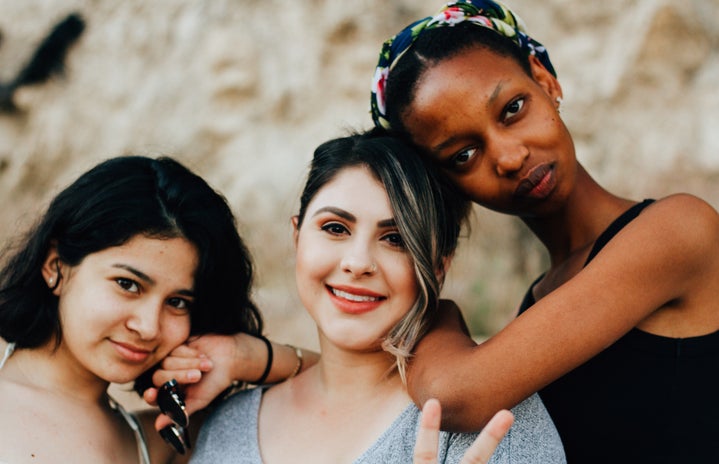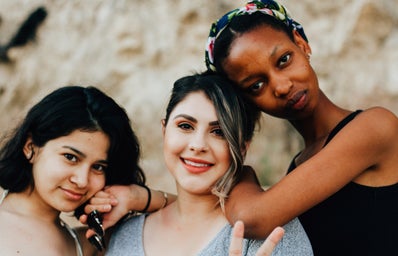Over the past several decades, and especially in the 21st century, anthropologists have broadened their scope of vision to incorporate those of more marginalized communities. These individuals may be female, gender non-binary, differently-abled, impoverished, mentally ill, children, enslaved persons, BIPOC, and so many others. An even more inclusive grouping of those who are slowly being given more attention would be anyone who is not a European middle-to-upper class cis-male. This newfound fascination with the marginalized, while somewhat exploitive, has been quite beneficial to the advancement of equality in the archaeological record. To a well-adjusted academic in modern times, the accurate representation of an ancient population seems obvious, if not degrading to even question. However, for as long as the study of human history has been in existence, those of more exciting statuses have been given the spotlight at an exceedingly higher rate than those who were just… “normal.” The purpose of writing this article will be to hopefully level the playing field – to give back the attention to those who deserved it just as much, arguably more. To those who were not only marginalized in life, but also in death.
For the sake of this article, gender will be defined as the socially constructed identity (or absence of such) with which you identify, along the spectrum of masculine to feminine, including each extreme and all variances in between. This definition may sound as all-encompassing, and for lack of a better term, vague, as possible – but that is exactly what gender is. Gender is a social construct, and because of this, can have no objective evidence grounded in reality. Other demographic factors relate to gender in this way, such as sex, race, and disability. However, these categories have accompanying biological characteristics, thus they will be treated as less socially constructed, but still so.
With the slow decrease of the wage gap, an increase in feminist activist groups, and more female politicians being inaugurated each year, it’s easy to believe that gender equality is upon us. Unfortunately, this mindset may only be for naive optimists. Admittedly, women are able to vote and are no longer the legal property of their fathers and husbands, but what an unbelievably low bar Western civilization must-have for that to be deemed incredible. Gender equality doesn’t simply stop at women having the same status as men. Equating gender equality with women’s rights inherently disregards the fact that gender doesn’t stop at women and men. True gender equality is equal status among all genders – women, men, non-binary, gender-queer, transgender, etc. To relate this to bioarchaeological study, gender equality in the field would be an equally valued and accurate representation of all gender identities across time and space – an achievement which we are far from. In an article written by Pamela Geller, she discusses the concept of Presentism, or the tendency to be conditioned by our present to relate past contexts to modern ideals. In practice, this results in the simplification of complex ancient concepts. The primary example given in Geller’s writing is explaining a Two-Spirited Indigenous person as a “250-year-old transgender decedent.” While this modern simplification might increase the level of understanding among the lay public, it completely disintegrates this person’s identity. It is more important to acknowledge the customs and beliefs of a population than to relate any identity to present terms. This is only one example of an infinite amount of instances where bioarchaeologists misrepresent and marginalize those of non-binary identities. In a publication by Lara Ghisleni, one incredible point made is that gender should never be used to divide and rank people. Instead, it should be seen as an all-encompassing spectrum with which you can relate and unite people. Gender should be used to find commonalities, not categories.
Another identity, though less socially constructed, that has been marginalized time and time again by bioarchaeologists is children. Adolescents make up approximately 25% of any given population, and although the physical impact of children has been studied, the social impact of children has just come into focus. Physical impact might be one of a few things: skeletal remains, labor evidence, grave goods, community architecture, or any other physical evidence of children. The social impact might include tribal interaction, language comprehension, immigration adjustment, group entertainment, etc. The intangible effect that the adolescent population has on any society is just as great as their adult counterparts. To assume that children simply take up time, space, and resources is diminishing them to essentially a fast-growing pet. In order to avoid marginalizing these people in bioarchaeology, we must acknowledge their impact on societies throughout history. As Halcrow explains it in her article on Childhood and Social Age, we should avoid seeing children as “passive victims of their environment,” and instead view them as quite active and influential components of any society.
A third group that is marginalized often in life and in death are the impoverished. In life, those living in poverty are seen as inferior, dirty, and not worth the attention of the greater society. This negative correlation between income and human worth results in decreased access to healthcare, sustaining resources, and adequate quality of life. Bioarchaeologists can see this in the skeletal record. Higher infant mortality in a population usually is an indicator of poverty. This is due to factors such as early life stressors or most often poor maternal health. In a study done by S.L. Newman, the skeletons of deceased infants were analyzed and it was found that before even being born, their long bone and dental growth was severely inhibited due to the high stress and low nutrition of the mother. Those of lower-income households are born already a step behind everyone else. To not give those with inadequate resources an equal chance to life is one of the highest forms of marginalization.
Not only are those living in poverty disrespected in life, but they are also among the first to be taken advantage of in death. With the boom of anatomy and biology sciences in the 18th and 19th centuries, the demand for cadavers was astronomical. The only way for scientists to legally acquire bodies to study at the time was through the prison system. When this didn’t satisfy their need, they resorted to grave robbing. Of course, the first subjects to be dug up were those in unmarked or lowly-looking graves. This included the mentally ill, differently-abled, people of color, and impoverished. In an article published by Smithsonian Magazine, they state that “cadavers sent to Johns Hopkins belong disproportionately to the…downtrodden.” All who were tossed aside in life were put back to work again in death for the advancement of a science they would never benefit from.
While anthropology might seem like a people’s science, it’s important to be aware of which people it is benefiting and harming. The field of bioarchaeology has come quite a ways from its inception, but it has far to go before it is the objective, respectful science it hopes to be. Until then, we as scientists must push our efforts in the right direction. Tell the stories no one wants to hear, publish the findings that challenge beliefs, and give validation to all decedents – no matter their identity, status, or subjective value in life.


